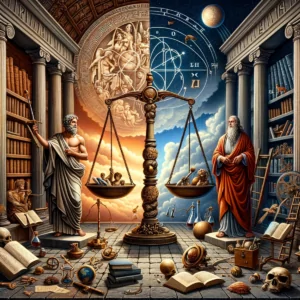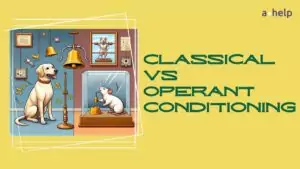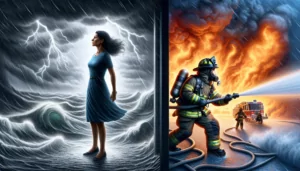By Michael Savage

✅ AI Essay Writer ✅ AI Detector ✅ Plagchecker ✅ Paraphraser
✅ Summarizer ✅ Citation Generator
Some of the earliest art exhibitions gathered together selections of the greatest works they could find, without particular concern for coherence. The vast Manchester Art Treasures exhibition of 1857 is the exemplar, with a panoply of masterpieces largely from British aristocratic collections. These displays offered public entertainment without pedagogic purpose. Later in the nineteenth century, art history became more professional, with expert curators like von Bode in Berlin. A particular focus was on attribution, and exhibitions were staged to permit comparison between works attributed to particular artists to facilitate the task of separating works by an artist from those of his or her studio, or by followers or even forgers.
Today this kind of connoisseurship is often frowned upon and is disdained as elitist in certain academic circles. In some museums, traditional displays organised by chronology and geography have been rejected for themes, gathering together landscapes and portraits irrespective of when, where or by whom they were painted. Curators seek to make museums as accessible as possible; anyone can already see that a painting is a landscape, but it requires some knowledge to identify it as a seventeenth century Dutch landscape by Ruisdael. Thematic arrangement might make it easier to relate to when you come in from the street, but the problem is that you go back to the street with no new knowledge or understanding. It flatters the untutored eye, but it offers no tuition. This approach condescends to the lay visitor by assuming that they lack interest or ability to develop critical faculties and increase knowledge.
Bronze is a thematic display that includes great masterpieces, and it is an absolute stinker. The immediately striking problem is the lighting. Spotlights add a degree of drama, particularly to the larger bronzes like the copy of Cellini’s ‘Perseus’, but militate against appreciation of the art by permitting us to see only a fraction of the whole. It privileges immediate sensation over relaxed contemplation, the impact of the whole over the appreciation of the parts. Some of the smaller bronzes are hardly visible. Worst of all is Vries’ ‘Hercules, Nessus and Deianira’ which is high up on a pedestal and scarcely lit at all.
Sculptures designed to be seen in the round are placed against walls, and some of the smaller bronzes are placed at the back of deep pedestals, making them hard to see at all. It is particularly tragic to see some of the loans from the Victoria and Albert Museum, which is walkable from the Royal Academy. At the V&A, they were in daylight and could be seen in the round, with no admission charge; for the duration of this exhibition, you have to pay £14 to see them as shadowy ghosts. I am grateful for the guards’ forbearance of my use of a torch, which made it possible to see so much that was otherwise not visible. I was careful to avoid disturbing other visitors, but I found groups congregating around me, amazed at what they were unable to see with the mean lighting provided at the RA.
The presentation is stupid. There is no nicer word for it. It is a meaningless hodgepodge of works from vastly different civilizations across time and space. Nothing is gained from showing late twentieth century abstract expressionist Kooning next to Italian renaissance Ghiberti. The catalogue explains that the thematic display was intended to dissuade people from concentrating on the periods they already know best, like the Italian renaissance. But it has the opposite effect. Each exhibit is stranded without context. Because the exhibition provides no context or meaning, we are forced back on what we already know. A display of bronzes from Benin, or from ancient China, may engage me and help me to understand less familiar traditions. Sticking them randomly with classical and renaissance bronzes brought together because they all depict animals makes me focus more on the things I know better. It was only after I left that I realised just how one-sided I had concentrated on the familiar, without particularly intending to do so. Instructive comparisons emerge by happenstance, such as between ancient and renaissance bronzes. But even here the fact of their being cast in bronze is incidental; marble sculptures could show the same effect.
The problems are replicated in the catalogue. Chapters cover recognisable art historical categories rather than themes, allegedly to provide a balance with the exhibition, but I suspect in practice because there is so little to say about bronze animals across history. The essays are good, but inevitably too brief to do justice to vast spans of art history, and they struggle to focus on bronze because they have to provide context on the wider culture. The illustrations are poor quality and the catalogue entries are a travesty—just a few hundred words each, squeezed in at the back. They can only hint at context, condition, and attribution.
Bronze is still an exhibition you should make every effort to see. The quality of the exhibits is astonishing and some rarely seen works are on display. There are ‘Oh My God’ moments around every corner, as yet another obscure masterpiece is revealed. Pierino da Vinci’s ‘The Death of Count Ugolino della Gheradesca and His Sons’ is a work of genius, but still little-known, as it was only recently rediscovered. One of my favourite sculptors is Adriaen de Vries, but his work is not easily accessible. His Forge of Vulcan from Munich is a remarkable tour-de-force, a deep relief of great virtuosity. Several of the classical bronzes are also of the very highest quality, and it was a treat to see them alongside those from the Renaissance. But the exhibition is less than the sum of its parts, and I left feeling cheated. It obscured more than it revealed and I learned nothing from the display.
How different is the lovely Raphael show in Haarlem. It is a small, select display of drawings primarily from two old collections, the Albertina in Vienna and the Teylers Museum in Haarlem. Three of the drawings at the Teylers Museum have recently been re-attributed to Raphael, and the exhibition gives context to these works.
A video explains the principles of attributing drawings to Raphael, and has a debate between the two curators about a drawing’s attribution, one favouring Raphael and the other favouring his school. The format is unfortunate; it seems to have been designed by someone working in children’s television. The voting buttons at the end are an absurd gimmick that detract from the seriousness of curatorial intent, reducing connoisseurship to a popularity contest. But the idea of engaging a general audience in the process of attribution is inspired.
The drawings are magnificent. Seeing originals by both Raphael and his best students reveals the master’s unique genius far more clearly than reproductions, which tend particularly to flatter artists like Penni and Giulio Romano. The exhibition covers the whole of Raphael’s short career, from the wonderful early sketches for several versions of the ‘Madonna and Child’, capturing an astonishing range of emotion with a few pen strokes, to the masterful studies for the Transfiguration, surely amongst the best drawings in the whole history of art.
Personally, I was convinced of only one of the three re-attributions, the excellent ‘Putto with the Attributes of Vulcan’. The ‘Portrait of a Young Man’ is damaged, so judgement must be more provisional, but its quality does not convince. The hatching is more mechanical than the ‘St Paul’, and the hands are oddly emphasised (perhaps partly an issue of conservation), with corrections that seem atypical, although the foreshortening is skillful. ‘Joshua Addressing the Israelites at Shechem’ is also too damaged for confident attribution, though it is plausible. The ‘Three Female Heads’ is disputed between the curators, but it reflects neither Raphael’s working practice nor his genius. The hatching of the upper two heads is accomplished, but the overall effect is less good than Raphael, an indication of a talented copyist who can replicate the parts without capturing the spirit of the whole
The booklet provided is useful. No dry technical guide, it conveys a real sense of excitement and offers qualitative judgments. It provides useful information that is so often lacking in museums, such as detail about the condition. The superb accompanying catalogue amplifies these points and has fine quality reproductions. Experiencing this exhibition makes clear that the process of engaging in questions of attribution is not an arcane antiquarian pursuit—it is a lively and dynamic engagement with art that trains us to appreciate artistic excellence and recognise gradations of quality. Not everyone has the time to devote to become an expert connoisseur, and we are blessed with varying degrees of natural aptitude. But we can all engage at some level and emerge with a better appreciation of art. The process is so much more rewarding than scattering art loosely related to a common theme.
Seeing these two exhibitions within a couple of days of each other was a fascinating contrast in museological approach. Bronze aims to entertain, to impress, and even to overwhelm with its accumulation of great works. But it deadens the soul with poor display and foolish presentation. In every respect Raphael is the more worthy exhibition. It shows that connoisseurship is not just for the cognoscenti. It invites visitors into a wider conversation about art, rather than condescending to them. It is more than the sum of its parts—its purpose is to educate and to enlighten, and I think every visitor will come away enriched and invigorated.
——
Written under a Creative Commons License, with edits: https://creativecommons.org/licenses/by/1.0/
Follow us on Reddit for more insights and updates.





Comments (0)
Welcome to A*Help comments!
We’re all about debate and discussion at A*Help.
We value the diverse opinions of users, so you may find points of view that you don’t agree with. And that’s cool. However, there are certain things we’re not OK with: attempts to manipulate our data in any way, for example, or the posting of discriminative, offensive, hateful, or disparaging material.